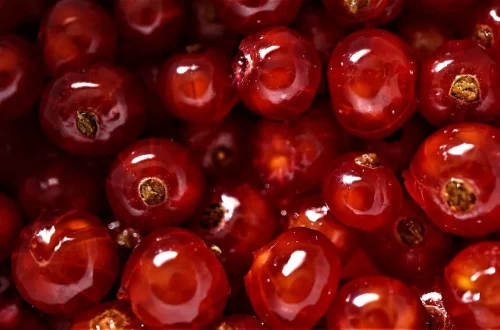
Understanding Orange Peel Chin: Causes and Effective Solutions
Understanding skin conditions can be a crucial aspect of personal care, as they often affect not just physical appearance but also self-esteem and social interactions. Among various skin concerns, “orange peel chin” has gained attention for its unique texture resembling the dimpled surface of an orange peel. This condition can arise from a variety of factors, including genetics, environmental influences, and lifestyle choices. While it may not pose any serious health risks, many individuals find it frustrating and seek effective solutions to manage its appearance.
The texture of orange peel chin can be linked to the underlying structure of the skin, which may become compromised due to factors like aging, hormonal changes, or excessive oil production. Understanding the causes behind this condition is essential for anyone experiencing it, as it can guide them toward appropriate treatments and preventative measures.
In addition, societal standards of beauty and the desire for smooth, flawless skin have led to increased interest in addressing various skin imperfections. Consequently, there is a wealth of information available on skincare routines, treatments, and products that claim to improve skin texture. However, with so many options, it can be overwhelming for individuals to determine which methods are effective and safe.
Thus, exploring the causes of orange peel chin and the various solutions available can empower individuals to make informed decisions about their skincare regimen. As we delve deeper into this topic, it’s essential to recognize that everyone’s skin is unique, and what works for one person may not work for another. This article aims to provide a comprehensive overview of orange peel chin, its causes, and potential solutions.
What Causes Orange Peel Chin?
The appearance of orange peel chin can result from several underlying factors, all of which can contribute to the skin’s texture and overall health. One of the primary causes is the natural aging process. As we age, our skin loses collagen and elastin, two proteins that maintain skin’s firmness and elasticity. This loss can lead to sagging and the development of uneven textures, including the dimpled look associated with orange peel chin.
Another significant factor is the production of sebum, the skin’s natural oil. Overactive sebaceous glands can lead to excess oil on the skin’s surface, which can contribute to a thickened appearance. This condition is often exacerbated by hormonal fluctuations, such as those experienced during puberty, menstruation, or pregnancy, where oil production can spike and lead to clogged pores.
Genetics also play a crucial role in determining skin texture. If your family members have experienced similar skin conditions, you might be more prone to developing orange peel chin. Additionally, lifestyle choices can significantly impact skin health. Poor diet, lack of hydration, and insufficient skincare routines can lead to a buildup of dead skin cells and debris, further contributing to an uneven texture.
Environmental factors, such as pollution and sun exposure, can also damage the skin and exacerbate existing conditions. Ultraviolet (UV) rays from the sun can break down collagen and elastin, accelerating the aging process and altering skin texture. Likewise, exposure to environmental pollutants can lead to inflammation and damage cellular structures, resulting in skin that appears uneven and dimpled.
In summary, the causes of orange peel chin are multifaceted, involving a combination of genetic predisposition, hormonal changes, aging, and environmental factors. Understanding these causes is vital for selecting appropriate treatment options and making informed decisions about skincare.
Effective Skincare Practices to Combat Orange Peel Chin
When it comes to addressing orange peel chin, adopting a comprehensive skincare routine can make a significant difference. The key is to focus on exfoliation, hydration, and nourishment to improve overall skin texture. Regular exfoliation is essential for removing dead skin cells that can accumulate and contribute to uneven skin. This can be achieved through physical exfoliants, such as scrubs, or chemical exfoliants, like alpha-hydroxy acids (AHAs) and beta-hydroxy acids (BHAs).
AHAs, such as glycolic acid, are effective in promoting cell turnover, which helps to reveal smoother skin. BHAs, like salicylic acid, penetrate deeper into the pores to help prevent clogging, making them ideal for those with oily skin. Incorporating these into your skincare routine a few times a week can provide visible improvements in skin texture.
Hydration is another crucial aspect of skincare. Keeping the skin well-hydrated helps to maintain its elasticity and plumpness, reducing the appearance of dimples and unevenness. Look for moisturizers that contain hyaluronic acid, glycerin, or ceramides, which can help retain moisture and support the skin barrier. Additionally, incorporating facial oils can provide an extra layer of nourishment and help balance oil production.
Sun protection is equally important in preventing further skin damage. Applying a broad-spectrum sunscreen with an SPF of at least 30 daily can help protect against UV rays that contribute to premature aging and skin texture issues. Remember to reapply every two hours, especially if you are outdoors for extended periods.
Lastly, a healthy diet rich in antioxidants, vitamins, and minerals can support skin health from the inside out. Foods high in vitamins C and E, omega-3 fatty acids, and plenty of fruits and vegetables can help nourish the skin and combat oxidative stress that contributes to skin aging. Staying hydrated by drinking plenty of water is also essential for maintaining skin’s overall health.
By implementing these effective skincare practices, individuals can work towards diminishing the appearance of orange peel chin and achieve smoother, healthier skin.
Professional Treatments for Orange Peel Chin
For those seeking more immediate or significant results, there are various professional treatments available that can effectively address orange peel chin. Consulting a dermatologist or skincare professional is advisable to determine the best course of action based on individual skin type and concerns.
One popular treatment is microdermabrasion, a non-invasive procedure that exfoliates the outer layer of skin. This technique helps to remove dead skin cells and improve skin texture, giving patients a brighter and smoother complexion. Microdermabrasion can be particularly effective for individuals with mild to moderate texture issues.
Chemical peels are another option, utilizing stronger acids to exfoliate and rejuvenate the skin. Depending on the depth of the peel, these treatments can address a range of skin concerns, including uneven texture and pigmentation. Superficial peels may offer quick results with minimal downtime, while deeper peels can provide more dramatic improvements but require more recovery time.
Laser treatments, such as fractional laser therapy, can also be beneficial for those looking to improve skin texture. This procedure involves using laser technology to target specific areas of the skin, stimulating collagen production and promoting skin renewal. Fractional lasers can help smooth out uneven textures and provide long-lasting results.
Microneedling is another innovative solution that involves creating tiny micro-injuries in the skin to stimulate collagen and elastin production. This treatment can improve skin texture, reduce the appearance of pores, and enhance overall skin tone. Microneedling can be combined with serums or growth factors to maximize results.
Finally, injectable treatments like dermal fillers can provide immediate volume and smoothness to areas affected by orange peel chin. Fillers can help to restore lost volume and create a more youthful appearance, although results are temporary and require ongoing maintenance.
In conclusion, there are several professional treatment options available for those struggling with orange peel chin. Consulting with a skincare professional can help determine the most appropriate treatment based on individual needs and goals.
Home Remedies for Orange Peel Chin
For individuals who prefer to explore natural and home-based solutions, there are several remedies and practices that can help improve the appearance of orange peel chin. These methods may not provide instant results like professional treatments, but they can be effective over time with consistent application.
One popular home remedy is the use of clay masks. Clay is known for its oil-absorbing properties and can help to unclog pores, reduce excess sebum, and improve skin texture. Applying a clay mask once or twice a week can provide a refreshing and detoxifying effect on the skin, helping to minimize the dimpled appearance.
Another effective method is the use of natural exfoliants such as sugar or coffee grounds. Mixing these with a carrier oil, like coconut oil, can create a simple yet effective scrub that gently removes dead skin cells. Regular exfoliation can improve skin texture and promote a smoother appearance.
Aloe vera is another powerful natural remedy. Known for its soothing and hydrating properties, aloe vera can help to nourish the skin and improve its overall appearance. Applying fresh aloe vera gel directly to the affected area can provide hydration and support skin healing.
Using essential oils like tea tree oil or lavender oil can also be beneficial. These oils have antibacterial and anti-inflammatory properties, which can help reduce breakouts and improve skin health. Always dilute essential oils with a carrier oil before applying them to the skin to avoid irritation.
Lastly, maintaining a consistent skincare routine that includes cleansing, toning, and moisturizing is essential. Regularly cleaning the skin helps to remove impurities that can contribute to uneven texture, while toners can help to balance the skin’s pH and minimize the appearance of pores.
In summary, there are various home remedies and natural solutions available to help combat orange peel chin. While these methods may take time to show results, they can be effective components of a comprehensive skincare regimen.
In conclusion, orange peel chin can be a frustrating condition for many individuals, but understanding its causes and exploring effective solutions can lead to improved skin health and confidence. Whether one opts for professional treatments, effective skincare practices, or home remedies, consistent care and attention can make a significant difference in achieving smoother, healthier skin.
**Disclaimer:** This article is not a substitute for professional medical advice. If you have health concerns or questions about your skin, please consult a qualified healthcare provider.




